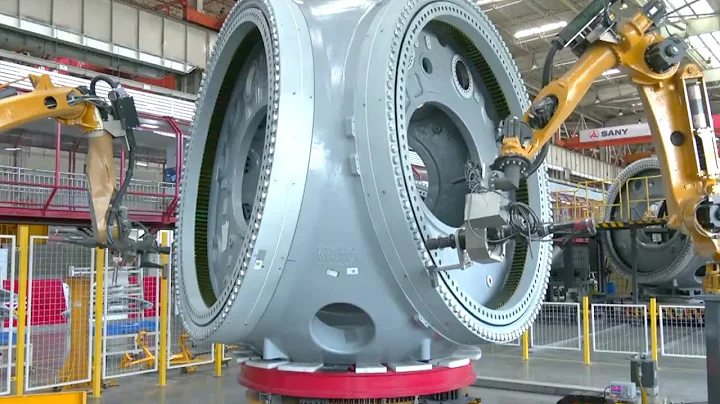
Figure: Mainland Manufacturing PMI Trend
Mainland’s official manufacturing PMI ( Purchasing Managers Index ) recorded 50.2 in June, an increase of 0.6 percentage points from May, and the increase was stronger than seasonal. At present, the manufacturing PMI has returned to the boom-bust line for the first time since March, reflecting the shift in manufacturing activity from contraction to expansion, but it is still lower than the level of the same period last year. The reason is that on the one hand, the peak of the epidemic has passed and the impact on the economy continues to weaken; on the other hand, policies to stabilize growth have gradually been stepped up. With the accelerated resumption of work and production, coupled with recent adjustments to prevention and control policies, the economy is slowly recovering.
Judging from the main sub-indicators that make up PMI, production, new orders, employees, and raw material inventory indexes all rebounded in June, among which the recovery in supply and demand is still the main driving factor. At the same time, the supplier delivery time index rebounded significantly, indicating that the delivery time of manufacturing raw material suppliers was significantly accelerated compared with the previous month. Among the 21 industries surveyed, the PMI of 13 industries is in the expansion range, and the prosperity of the manufacturing industry continues to expand.
The expansion of large enterprises has slowed down, and medium-sized enterprises have returned to the prosperous zone. In terms of enterprise size, the PMI of large enterprises in June was 50.2, down 0.8 percentage points from May and still on the line of prosperity and decline. The PMIs of medium-sized enterprises and small enterprises were 51.3 and 48.6 respectively, both up 1.9 percentage points from May. The former returned to the prosperous range, while the latter's contraction slowed down. It is worth noting that the production index and new order index of small enterprises were 49.6 and 47.8 respectively, an increase of 4.7 and 5.1 percentage points from May, but the performance was still weak.
The production index and new order index in June were 52.8 and 50.4 respectively, up 3.1 and 2.2 percentage points from May. The current manufacturing supply and demand index has returned to the boom-bust line for the first time since March. In terms of industries, the two indexes of automobiles, general equipment, special equipment, computer communication electronic equipment and other industries are higher than 54, and the recovery of production and demand is faster than that of the manufacturing industry as a whole. In contrast, the new orders index remains low. The new export orders index in June was 49.5, an increase of 3.3 percentage points from May. On the supply side, with the steady decline of confirmed cases in the mainland, the disruption of production by the epidemic has gradually weakened, and the stability of the supply chain has gradually been restored, forming a certain support for mainland exports. But in the long term, considering that overseas production has basically returned to pre-epidemic levels, mainland exports may still face downward pressure.
The main raw material purchase price index and ex-factory price index in June were 52 and 46.3 respectively, which were 3.8 and 3.2 percentage points lower than in May respectively. The price index has continued to fall in the past three months, especially the factory price index, which has been in the contraction range for two consecutive months. The author predicts that PPI ( Industrial Producer Price Index ) may fall month-on-month in May.
Employment pressure is gradually easing
In May the urban surveyed unemployment rate was 5.9%, down 0.2 percentage points from April. Entering June, judging from the PMI situation, the employment index of the manufacturing, construction, and service industries were 48.7, 48.3, and 46.6 respectively, an increase of 1.1, 2.8, and 1.3 percentage points compared with May. The increases were stronger than the season. sex, reflecting the marginal relief of employment pressure. However, what cannot be ignored is that the current employment situation has not yet returned to the level before the current epidemic, which means that stabilizing employment is still the focus of policy efforts in the next stage.
In summary, as the epidemic eases, the economy slowly recovers. The manufacturing PMI returned online in June, mainly due to improvement in supply and demand. It is worth noting that the performance of the production side is stronger than demand and recovers quickly. As the supplier delivery time index has reached a high level in recent years, coupled with the expansion of demand and the continued decline in raw material prices, companies' willingness to purchase has further increased. Perhaps affected by this, the raw material inventory index rebounded and the finished product inventory index fell further. In addition, although employment has improved marginally, the pressure is still high.
On June 24, the National Health Commission stated that it will resolutely prevent excessive epidemic prevention practices such as simplification, one-size-fits-all and layer-by-layer overlays, and effectively coordinate epidemic prevention and control and economic and social development. On June 29, the Ministry of Industry and Information Technology stated that in order to facilitate the travel of users, the "star" mark on communication itinerary cards will be canceled from now on.It is worth mentioning that according to the ninth edition of the prevention and control guidelines, the isolation and control time for close contacts and immigrants has been adjusted from "14 days of centralized isolation medical observation + 7 days of home health monitoring" to "7 days of centralized isolation medical observation + 3 days Daily home health monitoring”.
The author believes that while preventing and controlling the epidemic, stable growth will be placed in a more prominent position. At present, the PMI activity expectation index has rebounded as a whole, especially in the service industry and construction industry. The author predicts that in the next stage, policies to stabilize growth will be more active and the economy will continue to recover.





















